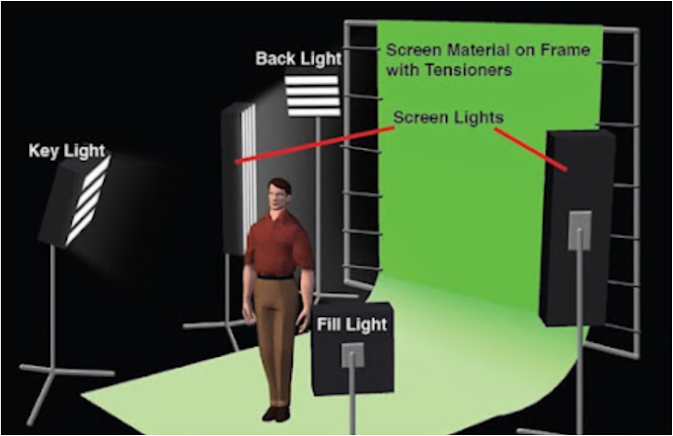Digital News - Blog Post 2
Digital news – Blog Post 2
Workshop Films and Outputs
The first thing we produced in Digital News was this news story about a gingerbread competition. This was fun as it was to be produced and filmed and edited in just one day, the same as a real-life news story would be. We had been taught some typical tropes of the news and planned to try these for the first time.
We started off our news package by practicing our set design to make a news desk. This shot above is a screenshot from something we shot on the camera. Below is a picture of this edited before having a green screen workshop a few weeks later. We did get help this time as George (Technical Tutor) set up the green screen lights and the autocue.
Considering we hadn’t worked on green screens yet or aftereffects and only had a quick workshop on it that day I think this went quite well. We only had one day to film and edit this whole package, so I think we did well.
This was the first shot we used for the interview but then we felt we needed more depth of field so we finished the interview and then changed shot. This was also our first time using Lavalier mics which was interesting and was good for interviewing.
This is the shot we used for the interview in the end. We moved the tree to behind me and had much more depth of field in this shot. We filmed the interview a few times.
Then we also got some other shots that are commonly used in the news to really get a high-quality news package.
We had a few workshops to help us with using Green Screens and using Adobe After Effects. These were useful for our Digital News unit but will also be useful in future for other units.
In this workshop we learnt about how to properly light a green screen to make sure the subject and green screen are separated properly. This was something I was not familiar doing so it did take some time to make sure we got everything right. We used the image on the right-hand side to keep referring back to so we knew we were placing the lights correctly.
We also practiced using autocue and setting that up. We set it up together and then put it on to the camera ready to use. We then wrote out our autocue on the iPad and placed that in the holder. Therefore, when filming, Bella could look straight at the camera and read out what she needed to say smoothly. We did have to adjust the speed a few times as sometimes it sounded too rushed, and we didn’t want our intro and outro to be too rushed so that it isn’t understandable.
When it came to actually filming our News Package, we set up the table and how we wanted that to look and got the camera and autocue ready. Then we arranged the lights as 3-point lighting. We quickly realised we should have put the table up after the lights as it got very busy and hard to move wires and the lights themselves. That is something I will remember for future use of the Green Screen room to make things move smoother. We did find that there was a shadow down Bella’s face when she was sat at the table which meant we had to use the white polystyrene board to balance out the lighting and reflect some light back onto the centre of her face.
Editing the footage was difficult at first to get my head round but once I understood how to use Adobe After Effects it was interesting to see it all come together and look professional like a real news package. We also used After Effects to create a news title introduction and lower thirds for when we edit our interviews.
We also went to the CEMA trenches, which stands for the Centre for Experimental Military Archaeology. At the trenches we spoke to Andy Robertshaw, and we got to interview him using some questions we had decided on a few days before. We used this shot as we found it had the best depth of field and was a good place to interview, leaving space for people to pass if they needed to. The interview was interesting as we practiced the etiquette of interviewing someone. We also then went into the trenches and got lots of B-roll. I enjoyed filming on location for the news as it meant we could get lots of close ups of things that are like real news stories we see. My role in the project was on camera so it was useful to be able to practice using the camera in an unfamiliar place before using it for our final product.
All our workshops and outputs were enjoyable in this unit as they gave us the chance to try new things and get used to interviewing people.












Comments
Post a Comment